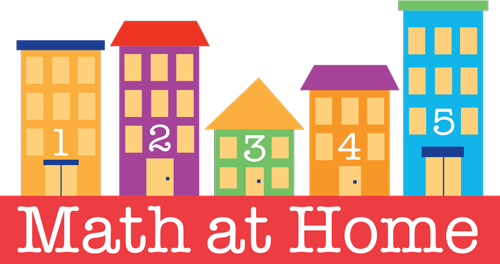Math Magic with Clay
Two-year-old Elizabeth screams with delight, “I made a ball, I made a ball!”

Finding the math in a ball of clay
Ah, it’s another magical moment with clay. Making shapes, discussing length, adding loose parts or subtracting pieces of clay to share with a friend. There is a whole lot of math in that ball of clay! Clay allows children to build in three dimensions, unlike coloring and painting. Children get to experience their first lessons in geometry as they begin to grasp concepts such as form, shape and perspective. When we talk about building that strong foundation for math success, we can add clay to our list of building materials. This month, I would like to help you set up a math-rich environment with clay or playdough—and I promise not to let it get too messy!



Containing the clay
When I returned from a study tour in Reggio Emilia, Italy, I tried to recreate the clay-rich environment that I encountered in the schools there. It did not work for me. Their resources and set-ups were far different from mine. As a one-teacher classroom, I needed something that was simple, easy and not too messy. Yet I saw the many benefits of clay, so I set out to create a design that would work for me. We use our clay indoors and outdoors, but there is one basic rule that I live by: All clay stays at the table. A hard lesson for our traveling two-year-olds, but they love clay so much that they always return to the table.



My favorite clays
We all draw our lines in the sand. That invisible line that says, “This item is more than I care to deal with.” For many early childhood educators, that item is playdough. If you hate playdough, give clay a try. If you use playdough already, you may want to add clay to your classroom. After we started using clay, we rarely went back to playdough. I’ve discovered two versions of clay that I really, really love. If money were no object, I would spend my days playing with Jovi Plastilina, a non-toxic, non-hardening modeling clay that is excellent for young artists with small hands. When I’m on a budget, which is always the case, I purchase a classroom pack of Crayola modeling clay, which contains 24 packs of clay in 12 colors. It never dries out and it’s easy to mold, even for my youngest learners.


My favorite trays
Trays give us a sense of order and add to the beauty and calmness of clay time. I love keeping our clay and loose parts in trays or low baskets. Chip-and-dip trays work very well. I like trays that are divided into sections. Small compartments invite children to touch and explore new materials with their clay.



Themed clay trays
We have nature-based trays, beach-themed trays and people-building trays, to name just a few. Trays will make your clay activities so much easier. When my students were robot crazy, I created a tray full of robot-inspiring parts such as googly eyes, straws, pipe cleaners, bottle caps, corks, gems and other oddities. This simple tray gave rise to an abundance of math language skills, including words like on, in, under, beside, above and below. Predictions about how tall a robot could be before its head became too heavy for its body. This is math! Don’t worry about actual number recognition or addition facts. This is our deep math foundation that is strengthened through play.



The possibilities are endless!
Clay and playdough offer many rich opportunities for mathematical reasoning and thinking. By creating a math-rich environment with clay and loose parts, you will fill your room with limitless opportunities for children to construct, invent and think divergently. Children will be introduced to measurement, spatial awareness, similarities, problem-solving and sorting and classifying every minute that they are working with clay. It’s a math extravaganza, all in one little ball of clay!



.


Love how they explain how the child reacts
Love all the trays out with different items to put in the clay. What a fun way to learn
I love seeing all the accessories that were available for the children to incorporate into and on their creations. A good introduction to the use of clay or play dough is the story, Don’t Touch.
I all ready typed the comment I love seeing all the accessories that the children could use in their clay creations. A good book to introduce the use of clay or play dough is Don’t Touch.
Thanks, Bonita! Heading to the library to find that book!
Love how creative the children are with adding different accessories to their clay creations
Using clay as a way for children to create pattern is a great idea.They can be creative using accessories to help in creating a simple pattern and for older children extending patterns. I have seen children make shapes with cookie cutters to create patterns either using colors or shapes of the cookie cutter.
Wow! There’s so many fun ways to learn using clay.I love it plus I took notes.
Thanks for sharing book title. Cant wait to introduce clay. Its so exciting to witness a child grasp a concept or use math vocabulary.
Great way to incorporate fine motor skills with math concepts.
Love all of the different materials they incorporate into playing with the clay, adds another level of learning. Can”t wait to try.
I loved the combination of play dough or clay with all the different items you can use to create.
This is such a great way to not just reinforce shapes and attributes but also allow the children to be creative